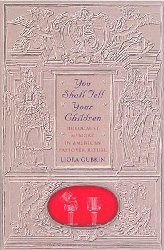A family haggadah is often an object of great affection. One example, the Sarajevo Haggadah, has enjoyed a unique status, having been rescued many times throughout its long life. By celebrating the Sarajevo Haggadah’s value as both a guide to family seders and a priceless work of art, Linda Leopold Strauss and Tim Smart demonstrate how this sacred book became important even to those outside its traditions.
Everybody’s Book opens in wartime. It is 1995, and an aerial assault on the Bosnian capital of Sarajevo is in progress. Neat lines of black planes and plumes of smoke wreak destruction on the city below. The Haggadah’s resilience is a central part of the story. First given to a Jewish couple as a wedding gift in Spain in 1356, the Sarajevo Haggadah eventually joined the mass exodus of Jews after their expulsion by the Catholic monarchs. A two-page spread of a world map highlights the Sephardic communities of Spain, North Africa, and Italy. The book has shared the fate of any well-used Haggadah: wine has been spilled on its pages, and it’s also served as a notebook for a boy practicing his writing. The Haggadah is not only an object of admiration, but also a practical item to be respected and loved. The author and illustrator explain to young readers how different communities have contributed to the universal symbolism of “everybody’s book.”
The cosmopolitan city of Sarajevo is home to Muslims, Christians, and Jews. In 1894, the Bosnia’s national museum purchased the Haggadah from its Jewish owners, who were compelled by financial need to sell it. During World War II, a Muslim curator at the museum hid the Haggadah, and the director, a Croat Catholic, boldly lied to the Nazis to prevent them from looting it. A long chain of events succeeded in relaying the book from one rescuer to another — but another war, in 1991, challenged the unity of Bosnia’s diverse community once again. As Strauss points out, there are many accounts of how the book was saved. One story, for instance, suggests that it was rescued from a fire that destroyed most of the museum and library. Ultimately, the lack of clarity about the Sarajevo Haggadah’s preservation lends the book an almost mythic status. What is confirmed is that, in 1995, the Haggadah was used at a seder in Bosnia’s last remaining synagogue and drew the participation of many religious leaders.
One illustration features a number of hands interacting with the Haggadah. An adult’s and a child’s fingers point to its pictures; a pair of clasped hands is folded in contemplation; and the hands of an aged man turn the pages. Mutual respect among different peoples has transformed one priceless document of Jewish life into proof that coexistence is possible.
Emily Schneider writes about literature, feminism, and culture for Tablet, The Forward, The Horn Book, and other publications, and writes about children’s books on her blog. She has a Ph.D. in Romance Languages and Literatures.





